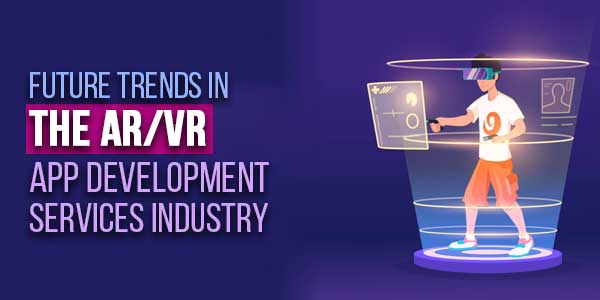
As technology advances imagination and reality seem to collide further opening up endless digital dimensions for us. It’s not only limited to the entertainment we have but also advances the way we shop, learn, and socialize.
Top-notch developers with their keen expertise and sharp minds are the driving force behind the continuous advancement in Artificial Reality and Virtual Reality.
Learn more about AR/VR and their noteworthy advancements in recent years by scrolling down with us.
Trust us this will be a fun ride!
Table of Contents
Origin Of AR VR Technologies:
Let’s go back to the late 1960s when a boy named Ivan Sutherland made the very first AR system– it was huge and clunky. Although it was not the best, it laid the groundwork we needed to have what we have today.
Now, straight jumping to the 21st century.
As the news highlighted, Apple and Google made a big hit with ARKit and ARCore. Suddenly, everyone was talking about AR, and with no time it was on our phones! From playing games to searching or even shopping, we now use AR for a lively daily experience.
Now, talking about VR.
During the years between the ’60s and ’70s, VR was there but it did not steal the light; Until the ’90s.
During this time Nintendo created its first-ever Virtual Boy. It was not fun to use as it had low-quality graphics.
Then, moving to mid-2010. With the release of Oculus Rift and HTC Vive, the concept of VR got a new outlook that made people more curious about it and gave the attention it deserved.
These headsets gave us amazing virtual experiences with clear visuals and cool controllers. And suddenly, VR wasn’t just for gamers—it was for everyone, from artists to doctors.
Current State Of AR VR App Development Services Industry:
Today AR VR app development services are making the headlines with their buzzing activity. Industry experts predict that by 2024, the Extended Reality market could be rising to over 100 billion U.S. dollars by 2026.
Leading the pack are big names like Microsoft, Google, and Facebook. It was not only the giants that were exploring the technology, but small players like Magic Leap and Unity Technology were also making headlines.
With the extensive use of AR VR apps almost in all industries and sectors from gaming to healthcare to education; it’s evident that the line would be blurred sooner between reality and virtuality.
Emerging Trends In The AR VR App Development Services Industry:
Day by day the horizons of AR/VR app development continue to expand. But with the technology being upgraded each day some remarkable software development trends are shaping the industry’s trajectory.
Some Of Them That Made A Record Were:
By analyzing user behaviour, AI algorithms enhance object recognition and offer personalized recommendations in VR shopping experiences.
Spatial computing is another AR VR app development that blends digital content with the physical world to create immersive mixed-reality experiences. This technology enables AR VR apps to blend seamlessly with real-world spaces, opening up new possibilities for remote collaboration.
Businesses can partner with AR VR development companies to create interactive museum exhibits or virtual fitting rooms, revolutionizing customer experiences.
Example:
The IKEA Place app is a powerful augmented reality (AR) tool that allows users to place virtual furniture in their homes. By incorporating these interactive and engaging visualization features, IKEA Place greatly enhances the online furniture shopping experience.
Source: Ikea
This innovative app allows users to virtually place true-to-scale 3D models of IKEA’s furniture in their homes using the camera on their smartphones or tablets.
With AR technology, IKEA Place lets users visualize how different pieces will look and fit in their space before purchasing.
Distinctive Features Of IKEA Place:
Realistic Visualization:
The application takes advantage of Google’s ARCore and Apple’s ARKit to produce accurate, high-quality 3D models that seem natural in the real environment.
Interactive And Engaging:
Both user-friendliness and engagement are key design elements of the app. The furnishings in their room can be moved, rotated, and examined from various perspectives.
Improved Decision-Making:
With IKEA Place, users can test multiple pieces and configurations to find the perfect fit for their space. This reduces the uncertainty and guesswork often associated with buying furniture online. Buyers can see how different colours, styles, and sizes work in their rooms, leading to more confident purchasing decisions.
Time And Cost Efficiency:
It saves time by allowing users to experiment with different setups without moving furniture or visiting a store physically.
Convenient And Accessible:
IKEA Place has become handy for organizing home décor as it is readily available for both iOS and Android devices and can be downloaded for free.
All things considered, the IKEA Place app is a prime example of how augmented reality may revolutionize online shopping.
- Web-based AR VR technologies are democratizing access to immersive experiences. AR VR app development is becoming more accessible, with benefits including enhanced reach and reduced development costs.
- Enhanced user interfaces are crucial for AR VR apps, ensuring seamless interactions and immersive experiences. Gesture recognition, voice commands, and haptic feedback create natural interfaces, reducing cognitive load and driving user engagement.
- Collaborative and social VR environments foster real-time interaction and collaboration among users, regardless of their physical locations. AR VR app development companies leverage collaborative VR for remote team meetings and virtual product design. Social platforms use VR to facilitate virtual hangouts, concerts, and events, offering users immersive experiences and a sense of presence.

Challenges And Opportunities:
Potential Challenges in Adopting New AR VR Technologies:
- High initial investment costs for AR VR app development services.
- Technical limitations and compatibility issues with existing devices.
- Limited user familiarity, requiring extensive user training and support.
- Ensuring privacy and data security within AR VR environments.
- Overcoming latency and performance issues in real-time applications.
Opportunities For Innovation:
- Utilizing powerful AR VR app development services to create affordable AR VR solutions.
- Enhancing user engagement with cutting-edge AR/VR app development features.
- Creating industry-specific AR VR applications for healthcare, education, and retail.
- Leveraging AI and machine learning to personalize AR VR experiences.
- Innovating user interfaces for more intuitive AR-VR interactions.
Implications For Businesses:
AR VR app development services are transforming various industries. In retail, they enable virtual try-ons and immersive shopping experiences. In healthcare, they assist in medical training, patient care, and remote consultations. Education benefits from interactive learning environments, while real estate utilizes virtual property tours and design visualizations. The entertainment industry also sees enhanced gaming and immersive storytelling. These trends highlight the profound impact of AR VR technologies on business operations and customer engagement.
The Road Ahead:
As with the advancement in technology and emerging trends in AR VR app development services, the future looks none other than promising. If not now then businesses would probably lose the chance of first mover advantage in their sector.
Investing in AR/VR app development, focusing on user-centric design, and continuously updating solutions based on feedback are crucial strategies that businesses need to follow.
Developers developing AR VR applications need to ensure accessibility, ease of use, and alignment with the latest technological advancements.
It is always recommended to partner with a reputable AR VR app development company to build an application that bridges the gap between virtuality and reality while also making an app that your user would be hooked on.
Conclusion:
Now as we wrap up one thing becomes abundantly clear: the future is here, and it’s extraordinary. Companies are seeing an incredible shift and embracing a new age in which creativity and reality coexist harmoniously.
We are excited about the future, aren’t you?
Take a leap of faith in the future of AR VR and bridge the Real and Virtual Worlds.

 About the Author:
About the Author:
















Be the first to write a comment.